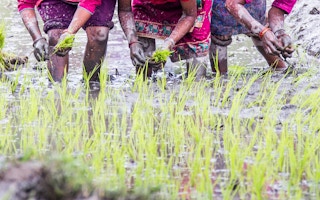Phytoremediation, or the use of plants and soil microbes to remove toxic contaminants in the environment, may offer Nepal an affordable way to deal with heavy metals like lead, mercury as well as arsenic that are frequently found in the country’s soil and water, researchers say.
In a review, published July in Chemosphere, the researchers note that the global economic impact of heavy metal pollution is estimated at more than US$10 billion per year, with the risks and effects magnified in developing countries because of limited resources and treatment technologies.
“Industrialisation, rapid global population growth, and increase in agriculture have all hastened heavy metal poisoning of soil and water environment in the modern society,” the study says.
According to Shukra Raj Paudel, corresponding author of the study and an associate professor at Nepal’s Tribhuvan University, phytoremediation can be adopted as a successful and eco-friendly remediation measure in today’s dynamic environment wherein heavy metal contamination has become a more significant issue.
“Phytoremediation uses plants for extracting, immobilising, containing, and degrading contaminants in soil, water, and air while preserving their biological and physical state,” Paudel explains. Some of the plants cited in the study include Indian mustard and alfalfa to combat lead, morning glory against copper, ladder brake and needle spikerush for arsenic, and common yarrow for mercury.
Heavy metal contamination affects infants and children worst. Exposure to lead is associated with poor development, nerve disorders and behaviour-related issues in children while it causes increased blood pressure in adults. Mercury affects the nervous system, eyes, skin, kidneys, lungs, and the digestive and immune systems. Long-term arsenic exposure is linked to cancers of the skin, lungs and bladder.
Paudel says that traditional phytoremediation methods are limited by factors such as the biological cycle of plants and heavy metal concentrations. “Some enhancement, either in the plant species or in the surrounding environment is required to improve the phytoremediation process.”
“
Phytoremediation uses plants for extracting, immobilising, containing, and degrading contaminants in soil, water, and air while preserving their biological and physical state.
Shukra Raj Paudel, associate professor, Tribhuvan University
Several plant-based remedial measures have been successfully used to remove heavy metals in the US, Canada, Russia and many European countries. However, in developing countries like Nepal, the overall cost of remediation, technical requirements, social acceptance and sustainability are major issues for the decontamination of sites.
On the other hand, Nepal could fall back on its enormous plant wealth to develop cheap, low- or medium-cost technology methods of remediation and maintenance of contaminated sites, the study says. This would involve the selection of commercially viable ‘hyperaccumulator’ species capable of absorbing large amounts of heavy metal compounds and their strategic introduction to areas that need decontamination.
In the study, the researchers reviewed the status of heavy metals in various polluted sites in Nepal, analysed the mechanisms by which plants absorb heavy metals and evaluated prospects for plant-based remediation measures.
According to Paudel, while methods applied in the past have failed to address heavy metal contamination at many places in Nepal they continue to be attempted for lack of information on recent advances in enhanced phytoremediation.
“A significant portion of the society in developing countries have restrained the application of phytoremediation,” he adds. “In Nepal, efficient and sustainable removal of heavy metals in several regions using enhanced phytoremediation.”
Radha Rani, assistant professor of biotechnology at India’s Motilal Nehru National Institute of Technology, tells SciDev.Net that using plant-based technologies for the remediation of heavy metal contaminated sites has “immense potential while providing an economic, eco-friendly, and aesthetic solution for the restoration of degraded ecosystems”.
This article was originally published on SciDev.Net. Read the original article.








